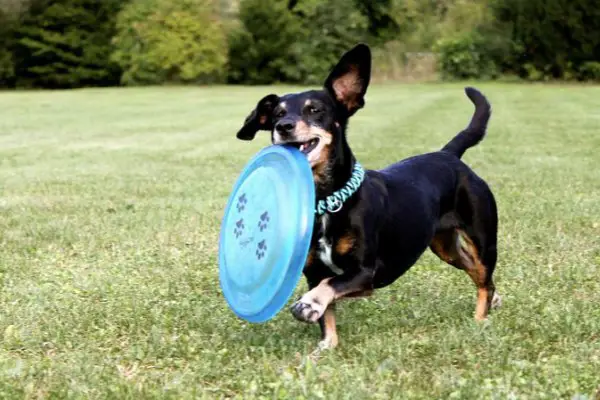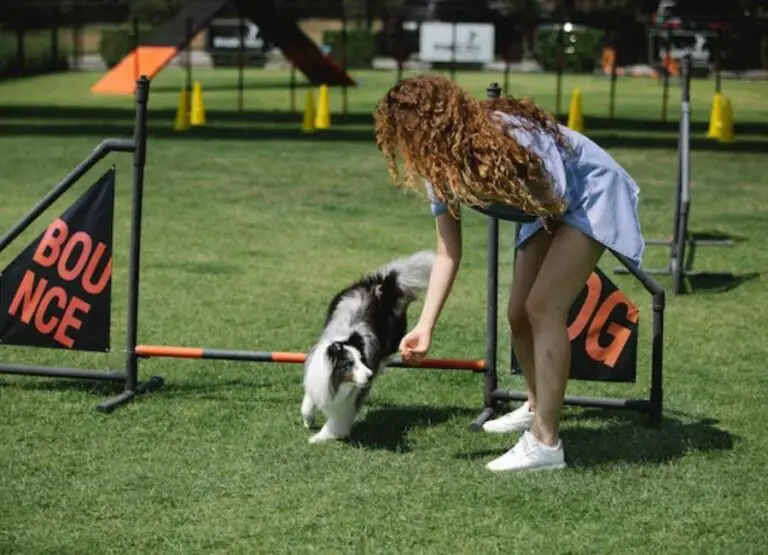How To Discipline a Beagle [10 Insights]
![How To Discipline a Beagle [10 Insights] How To Discipline a Beagle](https://petcreeks.com/wp-content/uploads/2023/05/How-To-Discipline-a-Beagle.jpg)
Let’s talk about how to discipline a beagle…
If you’re a beagle owner, you know just how lovable and affectionate these pups can be. But along with their charming personalities comes a bit of mischief.
From digging up your garden to sneaking treats off the counter, beagles are notorious for their mischievous behavior.
So, how do you discipline your furry friend without sacrificing your bond? In this article, we’ll cover some effective methods for disciplining your beagle, while still maintaining a healthy and happy relationship. Get ready to say goodbye to those guilty puppy eyes!
How To Discipline a Beagle
The following are some common ways to discipline a beagle:
1. Ignoring Undesirable Behavior
Ignoring undesirable conduct might be an effective tactic at times. For example, if your beagle is seeking attention by barking or jumping, resist giving in.
Turning away or walking away might send a strong message that their behavior will not be tolerated. Once they’ve calmed down, reward them for their peaceful behavior.
This teaches your beagle that quiet conduct attracts attention and rewards, whereas demanding behavior does not.
2. Firm Verbal Cues and Commands
Teaching your Beagle basic vocal signals and orders is an important part of training. To communicate with your beagle, use clear and firm verbal cues.
Dogs respond well to consistent, clear, and easy-to-understand commands. Use short, assertive terms such as “sit,” “stay,” or “no” to communicate your demands.
Because beagles are intelligent, they will learn to correlate the words with the appropriate actions.
When issuing commands, use a calm and firm tone. Screaming or using violent language may confuse or alarm your beagle.
Your beagle will comprehend what you anticipate from them if your vocal cues are consistent and clear.
3. Redirect and Distract
When your beagle exhibits undesirable behavior, such as chewing on furniture or digging in the garden, transfer their attention to a suitable activity.
Dogs frequently misbehave due to boredom or extra energy.
To divert their attention, give them fascinating toys, interactive puzzles, or play fetch.
This not only avoids the undesirable behavior but also redirects their energy to something constructive.
You may help your beagle understand what is acceptable to chew or play with by continuously providing alternate activities.
4. Give them Time-outs
When your beagle exhibits persistent misbehaving, time-outs can be an excellent approach to reprimand them.
Make a designated quiet area or use a crate to ensure a safe and comfortable atmosphere.
When your beagle exhibits undesired behavior, lead them quietly and assertively to the appropriate place without exhibiting anger or impatience.
Put them in time-out for a brief period of time, generally a few minutes, to allow them to calm down and think about their behavior.
After the time-out, release them and offer them a chance to demonstrate positive conduct.
5. Firm but Gentle Corrections
It’s critical to establish a balance between being tough and gentle while punishing your Beagle.
Avoid using harsh or physical penalties, since this might erode your trust and bond with your Beagle.
Instead, express your displeasure in a calm yet strong tone of voice.
You can also use non-physical indicators such as withholding attention, turning away temporarily, or making a disapproving facial expression.
Consistency is essential; consistently and swiftly reprimand your Beagle’s behavior to reinforce the link between their behaviors and your response.
6. Establishing rules and boundaries
Establishing rules and boundaries is an important part of discipline for any dog breed, including beagles.
By setting clear expectations for your beagle’s behavior, you can prevent unwanted behavior and create a more harmonious living environment for both you and your pet.
Some examples of rules and boundaries include not allowing your beagle to jump on people or furniture, not allowing them to beg for food, and establishing a designated area for them to sleep and relax.
Consistently enforcing these rules and boundaries through positive reinforcement can help your beagle understand what is expected of them and lead to a well-behaved and happy pet.
7. Always Use Positive Reinforcement
Positive reinforcement entails rewarding your Beagle when he exhibits desirable behavior.
This strategy is based on rewarding positive behaviors with sweets, verbal praise, or affectionate caressing.
When your Beagle obeys directions, refrains from undesirable behaviors, or displays good manners, immediately recognize and reward them.
Positive reinforcement encourages your Beagle to repeat the behaviors.
8. Remain Consistent
The foundation of effective discipline is consistency. Because beagles thrive on routine, it is critical to establish clear rules and expectations from the start.
Determine what actions are appropriate and explain them to your beagle clearly.
If you don’t want your beagle on the sofa, for example, make sure everyone in the house is on the same page.
Consistently reinforce the desired behavior and avoid delivering mixed messages.
Allowing your beagle on the couch one day and scolding them the next will only confuse them.
9. Socializing your Beagle
Early socialization of your Beagle is critical for their general behavior and discipline.
Expose them to a variety of locations, people of varied ages and appearances, and other animals. Introduce them to new sounds, sights, and sensations.
Positive socializing assists your Beagle in becoming well-adjusted, self-assured, and less prone to anxiety or violence.
Encourage and facilitate pleasant encounters with other dogs, animals, and people to help them develop social skills and become well-rounded companion.
10. Seek Professional Help if Needed
If you are having difficulty disciplining your Beagle or if they are exhibiting persistent behavioral concerns, it may be useful to seek expert assistance.
A skilled dog trainer or behaviorist can examine your Beagle’s individual needs, determine the root causes of behavioral issues, and provide tailored guidance and remedies.
They may assist you in implementing effective disciplinary tactics, addressing any special difficulties, and developing a well-behaved and happy Beagle.
Things to avoid when disciplining a Beagle
When disciplining a Beagle, there are certain things that should be avoided to ensure that the training process is effective and doesn’t harm the dog’s well-being.
Here are some things to avoid when disciplining a Beagle:
- Avoid using physical punishment. Beagles respond better to positive reinforcement rather than punishment, which can lead to fear and aggression.
- Avoid yelling or shouting at your Beagle. This can also cause fear and anxiety in your pet, making it harder for them to learn and respond positively to your commands.
- Avoid ignoring bad behavior for too long. If your Beagle is misbehaving, it’s important to address it immediately to prevent it from becoming a habit.
- Avoid inconsistent discipline. Beagles thrive on routine and consistency, so it’s important to be consistent with your discipline to ensure that your furry friend understands what’s expected of them.
- Avoid using treats as the only form of positive reinforcement. While treats can be effective, it’s important to mix up the rewards to keep your Beagle motivated and engaged.
- Avoid setting unrealistic expectations. Beagles are hunting dogs with a strong prey drive, so it’s important to understand their natural instincts and work with them instead of trying to change their behavior entirely.
- Avoid punishing your Beagle for accidents during potty training. Punishing your Beagle can actually make potty training more difficult, as they may start to associate going potty with fear and anxiety.
- Avoid using a crate as a form of punishment. An appropriately-sized crate can be a great tool for potty training and giving your Beagle a safe space to retreat to, but it should never be used as a form of punishment.
- Avoid neglecting socialization. Beagles are social creatures and require regular interaction with humans and other dogs to develop good manners and social skills. Make sure to socialize your Beagle regularly to prevent behavior problems later on.
Learn more about handling beagle digging behavior.
Frequently Asked Questions
Why is disciplining a Beagle important?
Disciplining a Beagle is important so that they know what is expected of them and what behavior is acceptable. Without discipline, a Beagle may become disobedient and difficult to manage.
What are some common disciplinary techniques for a Beagle?
Some common disciplinary techniques for a Beagle include positive reinforcement, consistency, firm but gentle guidance, and redirection.
How do I establish myself as the alpha in my Beagle’s pack?
To establish yourself as the alpha in your Beagle’s pack, you should set firm boundaries and rules for behavior, consistently enforce them, and provide positive reinforcement when your Beagle follows them.
Is physical punishment an effective way to discipline a Beagle?
No, physical punishment is not an effective way to discipline a Beagle. Instead, it can cause fear and anxiety and may make your Beagle more difficult to manage and less trusting of you.
Learn more about caring for a beagle.
How can I discourage my Beagle from barking excessively?
To discourage your Beagle from barking excessively, you can redirect their attention with toys or treats, provide positive reinforcement when they are quiet, and use a verbal command like “quiet” to signal when barking is not acceptable.
How can I prevent destructive chewing in my Beagle?
To prevent destructive chewing in your Beagle, you can provide plenty of chew toys and bones, supervise them closely when they are out of their crate, use a bitter apple spray on items they are prone to chew and exercise them regularly to reduce stress and anxiety.
Learn more about dealing with beagle barking behavior.
Conclusion
In conclusion, disciplining a beagle requires a lot of patience, consistency, and positive reinforcement.
Remember to always be firm but kind, and avoid using physical punishment or harsh words.
With the right approach, you can help your furry friend become a well-behaved and happy companion. Happy training!






